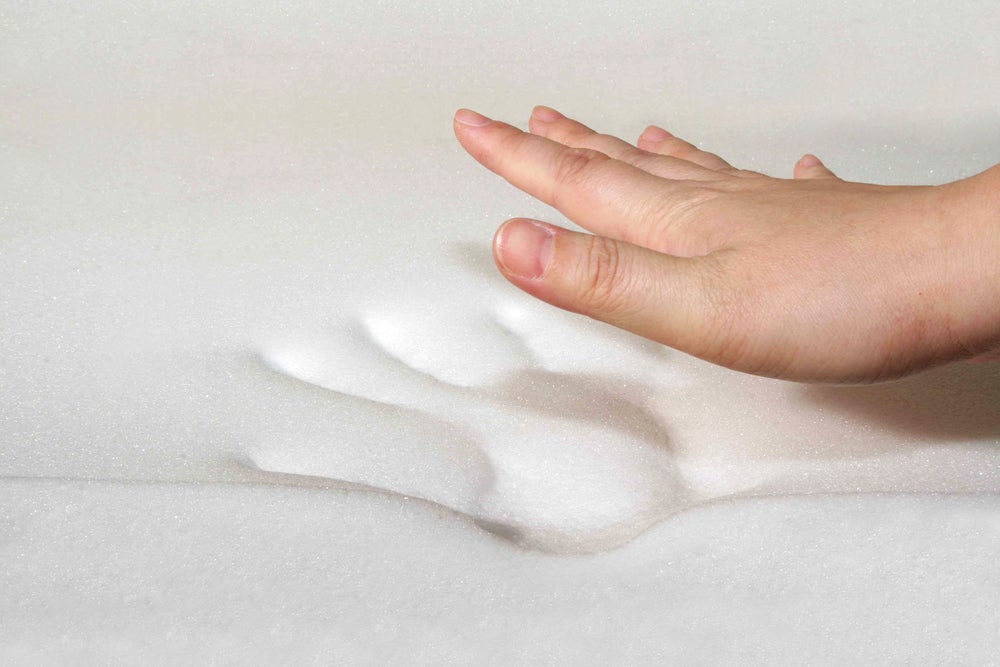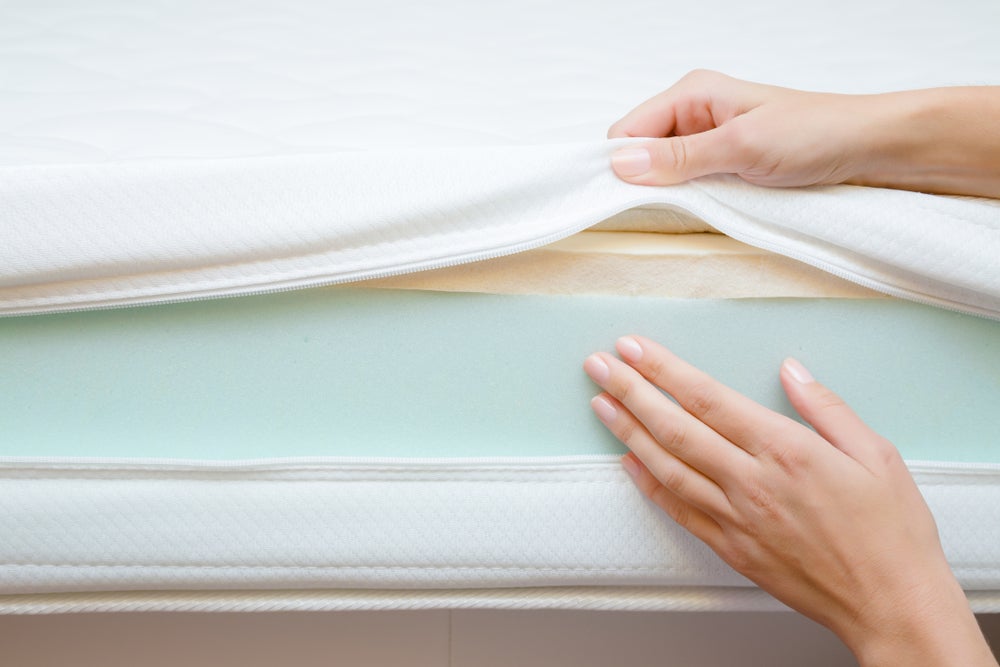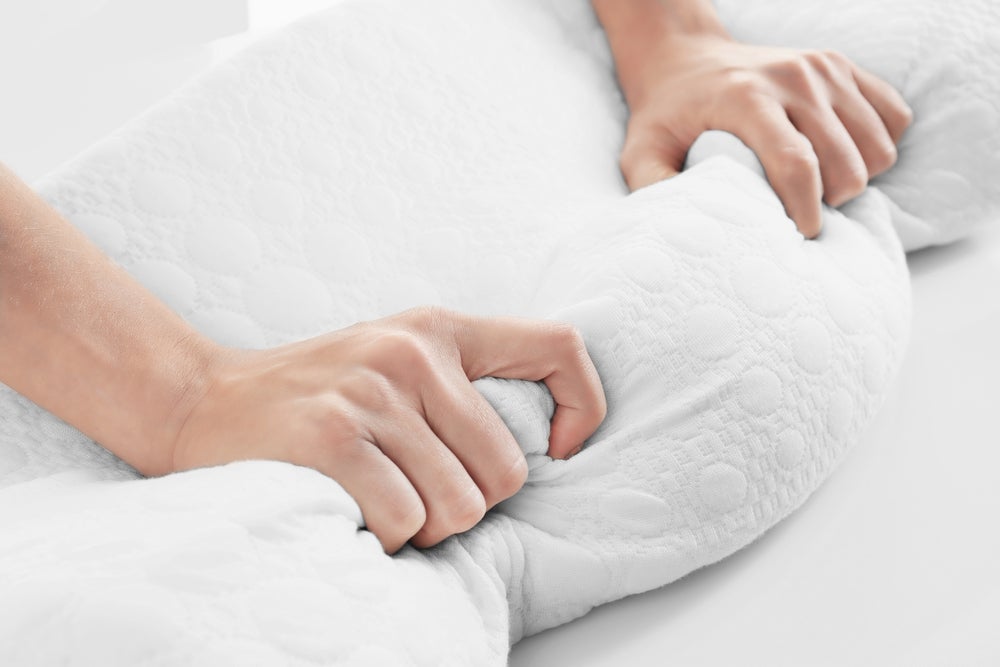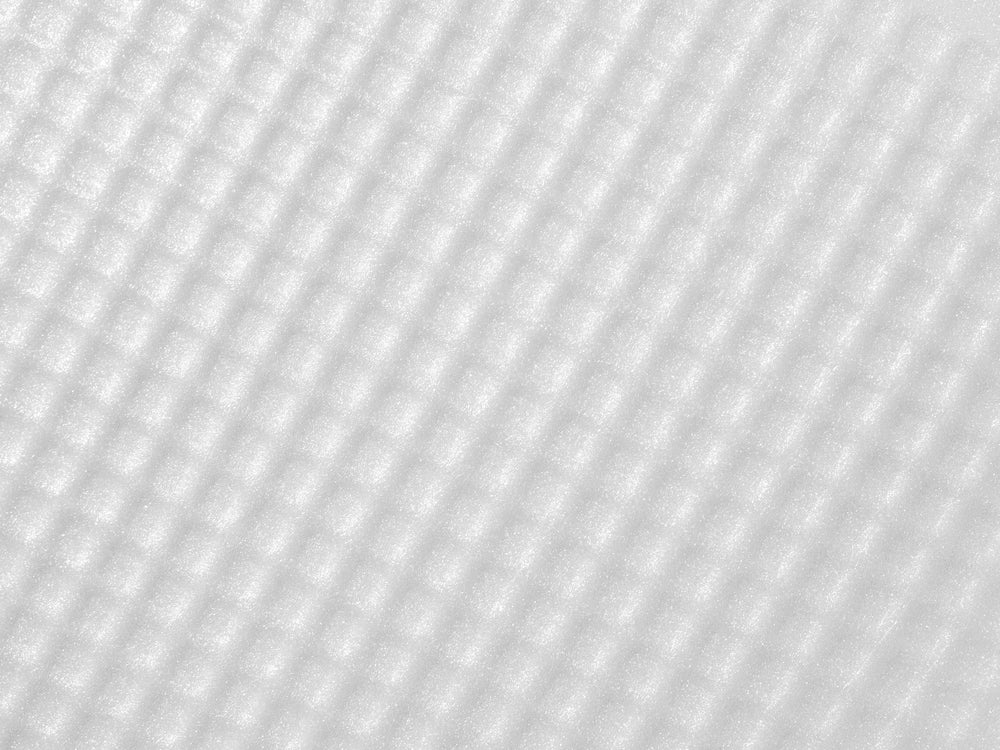Choosing furniture for your bedroom is an important decision. Your bedroom is your hideaway, your sanctuary. This means that everything inside of it should be comfortable, beautiful and beneficial to you. Most important of all is the selection of your bed and the mattress that goes on top of it. The process of selecting a mattress is key while furnishing the bedroom. But how do you know which mattress is right for you?
You must take into consideration your needs, your partner’s needs and your budget. If you want a quality bed, you should be prepared to pay a bit more money. As well, it can be difficult to select a good mattress type that works for you. Memory foam is a common type of mattress that people use. However, a lot of the time people do not fully understand the advantages and disadvantages of this type of foam. You’ll be keeping your mattress for a long time, so it is important that the various advantages and disadvantages are considered.
Visco Elastic
A term that is not commonly used in everyday conversation is ‘viscoelastic’. Viscoelastic foam is another way of saying memory foam. The method of manufacturing viscoelastic foam varies depending on the formula used by the company. These different formulas change the qualities of the foam. For instance, some types of viscoelastic foam might be more resilient to changes in the shape of a body that is lying on them. It might take longer to mold to the exact shape of the person. Visco foam is solid and dense. This means that most substances cannot pass through the surface. However, the foam also displays elastic properties. It is able to recover its shape over a certain period of time. It will soften when you lie on it but will return to its original shape when you get up.
This type of foam has been around for 50 years. In fact, it was originally invented by NASA as material that would have been used for the comfort and safety of astronauts during launch. People liked it so much it started being used in more and more instances and really blew up in mattress form when Tempurpedic released its memory foam mattress. Now you can find it in seat cushions, pillows, and even shoes!
Memory foam has certainly progressed a long way since it was first invented. Viscoelastic memory foam is often combined with materials that regulate the temperature of the human body. The consolidation of these materials usually results in a cool and supportive place to sleep. It is typically a dense, yet comfortable feeling for a sleeper. Usually, it is a good idea to check out the density of the foam mattress that you are considering. If it is below a certain density level, it may not be good quality and might not perform as well or last as long as you would like it to.
What is Memory Foam?
The basic kind is made out of a polymer known as polyurethane. This is a material that is commonly found in most sofas, mattresses, car seats and spray foam. Memory foam is a very durable type of material if it has a high enough density and is also known for providing good support and excellent pressure relief. These kinds of beds usually have a longer lifespan than spring mattresses.
You may want to read: Polyurethane Foam – Comfort and Support Layers
What are the Different Types of Memory Foam?
Memory foam comes in three primary types: traditional, open cell and gel-infused. Each of these has its own advantages and disadvantages, so let’s take a quick look.
Traditional
Traditional memory foam is what we’ve been talking about thus far. It provides for a good sleep experience by molding to your body. One of the biggest complaints, which we’ll go over in a later section, is the fact it has a tendency to retain body heat, making it uncomfortable to sleep in high temperatures. The other two types of memory foam were created to resolve this issue.
Open Cell
Open cell memory foam is your basic memory foam with a different internal structure. Open cell memory foam allows for a better movement of air inside the mattress, allowing it to better transfer heat away from your body as you’re sleeping.
You may be interested in: Open Cell vs. Closed Cell Foam
Gel
Gel memory foam, or gel-infused memory foam, is memory foam that has been pumped full of gel, which also has two different types. The first is a kind of material that just absorbs heat. Think of this like an ice pack you might keep in your freezer. The other type is actually what is called a phase-changing material. What this stuff does is help regulate your temperature as you sleep by absorbing and releasing heat. Science!
As a side fact, the gel microbeads used in gel-infused memory foam can actually serve to increase the density of your mattress. They can also, however, cause it to degrade faster if there aren’t enough pumped into it.
To really get the best sleeping experience for you, make sure you know what type of foam you’re getting!
You may want to read: How Long do Gel Memory Foam Mattresses Last?
Advantages of Memory Foam
Some people have insisted that these types of mattresses are the reason that they started sleeping well at night again. But is this true? Overall, it is very difficult to measure because sleep is so subjective. It varies for every single person, so it is hard to judge what a ‘good sleep’ looks like. However, there are some key benefits to memory foam that are known to us.
Uses Your Heat
One of the great benefits of solid memory foam is it’s able to use your heat and body pressure to form to your exact shape. The “visco” part of viscoelastic is what comes into play here. Your body heat actually softens the memory foam, making it more viscous. This is what allows you to sink in. It essentially creates a mold of your body. When you get up from the bed, the foam goes back to how it was originally. That would be the “elastic” part.
This will make a more comfortable sleep for people, as the mattress is perfectly indented to suit them. This is also good for supporting the alignment of your body. Sleeping on a natural curve is good for your spine, and promotes lumbar support.
Relieves Pain
A great feature of memory foam is that it’s also helpful in terms of relieving the pain on pressure spots. If you have arthritis or joint pain, then these beds might be able to help. It cushions you and will reduce any impact you might otherwise encounter.
Older beds which use only a pillow top or some sort of soft top layer, have a tendency to begin wearing out over time, which allows the underlying springs to start making more and more of an impression. Eventually, these springs can serve as pressure points on the bed, causing you discomfort.
Memory foam, for the most part, eliminates this. Many memory foam mattresses don’t even include springs, and in hybrid mattresses that use both, the foam serves as a fair enough protector between the two. This is, of course, good news for anyone who suffers from things like back pain.
When using a memory foam mattress, it is less likely that you will be able to feel your partner moving. There is a reduced chance that you will be bothered by their getting up or tossing and turning. This is due in part to the density of the mattress. Because you sink in, movement is basically absorbed by the mattress, rather than being transferred, as would happen with a traditional spring mattress. This is good if you are a light sleeper and are easily awakened.
You may be interested in: Differences between Memory Foam and Hybrid Mattress
Great for Those with Allergies
Another benefit is that memory foam can be hypoallergenic. It has a very dense structure, which is good for reducing the number of allergens that can build up. Dust, mold and other allergens will not be able to find a way into your mattress. This is very helpful for people who have allergies, as they are very often prevented from getting a good night’s sleep.
Disadvantages
Although these types of beds have proven to be beneficial, it is not the solution to every sleep problem. Memory foam mattresses can offer no relief for the condition of sleep apnea, or sleep-breathing disorders.
Heavy
The dense foam can be both an advantage and a disadvantage. The density makes the mattress very heavy, and difficult to move. This means that one person alone might not be able to set the mattress up initially. Lifting it up to put sheets underneath might also prove to be a problem if you are trying to do it by yourself.
Many of these newer bed-in-a-box products being released, such as the Casper and Leesa mattresses, are advertised as being lighter and easier to move around, but this is due to the fact they only contain memory foam layers, which add less to the weight.
Too Hot
Another disadvantage is that these beds tend to retain body heat. This means that during the warm months, the sleep might become overheated and uncomfortable. As a result, they will be awoken more times during the night. This can easily become a problem for people who live in warm climates with lots of humidity in the air. These people might be forced to purchase a dehumidifier just so that they can get through the night comfortably.
This can also be combatted by choosing the right type of memory foam. If you’ve found you get warm using regular memory foam, or if you just want to avoid the chance altogether, you’re going to want to aim for either open-cell memory foam or a gel-infused memory foam, both of which are designed to keep sleepers cooler.
While both types of foam do a great job of initially keeping you cool, they will still begin to equalize and warm up at some point. By keeping you cooler longer, however, they will help you fall asleep faster, allowing your body to more quickly begin the cooling process which happens during sleep.
Not Waterproof
These mattresses, as well as toppers, do not do well around moisture. You should be very careful to avoid interaction between your mattress and any type of moisture. This can speed up the degeneration of the mattress, and the usable life will be reduced. It also makes it difficult to clean.
A great option if you’re going with memory foam is to use some sort of waterproof mattress cover. These have greatly advanced over the years and aren’t like the plastic sheets you might see on an ’80s sitcom when a kid wets the bed. High quality mattress covers are nearly imperceptible, but will still protect your mattress from any sorts of fluids which may damage it.
Takes Time to Adjust to Different Positions
If you are someone who rolls around often in the night and likes to try out different positions, this may be a bit of an issue with memory foam mattresses. The memory foam will take some time to adjust from one position to the next. It will cradle your body again, but not right away. Some mattresses are able to conform within a shorter amount of time than others. There is a definite lack of springiness with memory foam, which elastic foam is more known for.
This isn’t necessarily true for all types of memory foam, but it would be considered a general rule. Certain materials added to foams can adjust the response time.
Strong Odors
At the beginning of its life, foam products such as this sometimes produce a chemical-like smell. This is referred to as off-gassing, and it’s caused by VOCs, which are often found in any type of manufactured product with foam, plastic, or thick adhesives. This can be irritating to sleepers who have sensitive noses. The distinctive smell can sometimes last for several weeks until it wears off. But often it only requires a few days to air out.
It’s important to note this is primarily an issue with cheaply manufactured foam and memory foam. When researching your purchase, try to ascertain the quality of the foam. If it is of good quality, it has likely been tested to make sure all the fumes coming out of it are safe.
With that being said, the gases are not harmful in memory foam beds, just irritating. Some people have reported having respiratory issues, but nothing more than that. Even so, it is a good idea to let your mattress air out before sleeping on it.
Pricey
Although these beds are durable and good quality, this also means they do not come cheap. Memory foam is quite well-known for being high in price. It may be more than what some consumers are willing to spend on a mattress. You will need to decide if the quality is really worth the price tag.
This is where it becomes important to ask questions. What kind of foam are you getting? What is the density? Is it open-cell, gel-infused or traditional? Because of the price, you want to make sure you’re getting the best and not being sold something which won’t live up to your desires and expectations. Also keep in mind, just because you find a cheap mattress, it doesn’t mean it’s a good deal. The issues that come with cheap memory foam will typically outweigh whatever the price difference may be.
The Marketing of Memory Foam
Some memory foam manufacturers label their products as all being the same. They state that memory foam is memory foam, and there is no difference at all. This is to convince you that you do not need to shop around for different types of memory foam. Do not be fooled by this form of marketing. Memory foam mattresses are all very different, and some have very distinct qualities. You will need to look around for exactly what suits your needs the best before you make a decision on which to buy.
Memory foam, as discussed earlier, is much denser than regular foam. Certain types are also firmer than others. This might be preferred if you have backaches or need more support while you sleep. Other types of foam are infused with gel. Gel-infused memory foam has a greater ability to take body heat away from the person who is sleeping in the bed. This will result in a cooler and more comfortable place to sleep.
It is important to match each individual person with their desired bed type. Simply saying ‘one size fits all’ is not a good way to market to the public. People will not be getting the mattress that they truly need if this is how the marketing is going to be. Each different type of memory foam mattress should be explained and the customer should know what it is that they are purchasing. After all, good mattresses are expected to last for years. A purchase with this level of commitment should be made with all the knowledge available.
The Weight of Memory Foam Mattresses
Now some of you might be wondering how to choose between the different weights of memory foam mattress. Some of them are much lighter than others, does this really make a difference in how you will sleep? Yes, it makes a big difference! If you have a larger body size, then you will be better suited towards a heavier mattress. The added density of the weight in the mattress will give you more support and you will find yourself having a restful night’s sleep.
For the most benefit, you’re going to want to aim for a mattress with a density of around 3.5 to 4 lbs per cubic foot and 5 lbs if you are on the heavier side. This would be considered a good quality mattress that will last you for quite some time. Anything less than that and you’ll see your mattress begin to deteriorate faster than you may like. The highest quality stuff has a density of 6 lbs per cubic foot or more. It’s going to cost you more money, but you’ll sleep very well. Anything higher than that and the benefits start to taper off.
If you have a larger build, you will actually perceive a firmer mattress as being softer than it really is. This is because the softness of the mattress depends on how far you sink into it. Heavier people will be creating a deeper cradle in the foam, and their weight will be spread out more. As well, this person will need more support in the mattress so that they do not sink down as far. A firm upper layer of a mattress will be good for larger people because it will relieve the pressure points of their bodies.
In contrast, a person with a smaller body shape will be more inclined to use a softer mattress. They do not have as much need for weight distribution, so they will not be sinking far into the mattress. So, if you’re a bigger person, definitely try to get a mattress with a higher density.
Durability
If you’re going to be spending a large chunk of money on a mattress, you’re going to want to make sure it will last a while. This is entirely up to the durability of your mattress. For memory foam, that is determined in large part by three factors: the density of the foam, what is in the foam and your BMI.
First off, how are we going to define durability? This would be how long you can sleep on a mattress and still find it to be as comfortable as it was when you first purchased it. Because of this, the length of time can be subjective, but it should all be relative.
Density
Let’s talk density. We discussed earlier you want to go for a mattress with a density of no less than 3.5 lbs per cubic foot. For the longest lasting, you want to aim for 6 lbs per cubic foot. Anything more than this suffers from diminishing returns and will likely cost more than it’s worth.
Sometimes fillers are added to memory foam which can affect its density. Some of these are beneficial, like materials to increase fire retardancy or the aforementioned gel microbeads. Others can help lower the cost or make the memory foam easier to manufacture. Whatever the reason, though, these fillers can cause your mattress to deteriorate faster. They include silica, carbon black, calcium carbonate, various clays and more.
Though these materials may have positive effects, they can give your mattress a “false density,” making it seem more durable than it may actually be. If possible, try to ascertain the “pure” density of the memory foam in your mattress, which would be the density before anything was added.
Weight
Weight can have a great impact on the durability of memory foam. A heavier person will sink deeper into the memory foam, so foams with a lower density may wear faster than one might prefer. If you’re a heavy person, try not to settle for a density any less than 5 lbs per cubic feet.
Natural Oils
Additionally, your oils and such can have an effect. Our skin naturally contains oils that can be transferred to our mattress during sleep. This can be further aided by sweat, which itself can be damaging to your mattress. Using a mattress cover can help keep your investment safer over time. A good mattress cover can also protect you from the unexpected, like a sick child, a misbehaving dog or even a poorly placed glass of wine of plate of food after having a delightful breakfast in bed.
Replacement Time
There are a few signs to keep an eye out for when it comes to replacing your mattress. While a good quality memory foam mattress should last for eight to 10 years, it’s important to watch for these issues, as poorer-quality foam can go much faster.
If you see obvious sagging or that impressions last much longer than they did previously, that’s a good sign the elasticity of your mattress is starting to wear out. This can also present itself in the form of lumps and bumps in the foam.
Finding yourself being unable to fall asleep and stay asleep can also be a sign things are going wrong, assuming you didn’t previously have this issue.
Also, even though these mattresses tend to lean toward being hypoallergenic, in their older age you may find yourself seeing a noticeable increase in allergy symptoms.
For the most part, you’ll know when it’s time to get a new mattress. Memory foam is a great material, but when it begins to wear out, it’s fairly obvious.
An Alternative
If you’ve gone through all this and determined that perhaps memory foam isn’t for you, there is a less expensive alternative to consider: reflex foam.
This is a particularly high-density version of polyurethane foam, which is the basis for memory foam. As such, it’s made as basically the same materials like memory foam, except it has a little bit of a different cell structure.
Instead of the hole’s memory foam uses to achieve its viscoelastic properties, reflex foam uses a bubble structure. These bubbles will move to conform to your body, but they bounce back to their original form when the pressure is released.
It is going to feel a bit more firm, which is good for the folks who don’t like the sinking feeling of memory foam. It’s much cheaper than memory foam and it also is resistant to dust mites.
You may want to read: Which is Better: Gel Mattress Topper vs Memory Foam?
Conclusion
Buying a memory foam mattress might be a great decision for you. It might help you get to sleep and prevent you from waking up through the night. However, it is important to conduct all your research before you go through with the expensive decision of buying a mattress. If you are easily woken up by a change in temperature, then these might not be right for you. As well, people who are easily bothered by strong smells might not find themselves happy with a mattress like this.
Overall, though, there are some great benefits to switching to memory foam. The additional comfort is top-notch and the fact they tend to last longer than traditional mattresses is definitely a big plus. And, with the right mattress, you may find the heat issues and off gassing aren’t a problem at all. It all comes down to quality and making sure you have the right information.
Photo credit: WhiteJack/Shutterstock; Andrey_Popov/Shutterstock; FotoDuets/Shutterstock; Stock-Asso/Shutterstock; Africa Studio/Shutterstock; fizkes/Shutterstock; komkrit Preechachanwate/Shutterstock
Frequently Asked Questions
Is a memory foam mattress good for a child?
A memory foam mattress will usually provide a good level of support, so it is suitable for children. And since it is hypoallergenic, it is great if your child has allergies. Other plusses include the fact your child won’t be able to jump on the mattress, extending its lifespan significantly, and the firmness of the memory foam will provide spinal support as your child grows. However, a memory foam mattress is not an ideal choice for very young children under five years old. If you do decide to purchase a memory foam mattress for your child, make sure you choose one made with high quality foam, such as one with CertiPUR-US certifications.
Is a memory foam mattress a good choice for seniors?
Generally speaking, some seniors may need a mattress that offers excellent pressure relief to help reduce the burden on pressure points in key areas like the shoulders, hips and back, especially if they are suffering from arthritis. A medium-to-medium-firm mattress will provide this kind of optimal level of support and can possibly help alleviate back and joint pain. However, if the foam is of poor quality, the mattress may not be comfortable or be able reduce the pressure on joints.
How long does a memory foam mattress last?
The answer to this question depends on the quality of the memory foam. A lower-quality memory foam mattress will last between three to five years, while a more expensive, higher quality model will last eight to 10 years. For comparison, a good spring coil mattress will last up to eight years and the thicker the coil springs, the longer the mattress will last. However, the advantage with a coil mattress is that you can flip it over every six to 12 months. Doing so will extend its lifespan. Still, a good memory foam mattress is considered more durable, with some lasting upward of 12 years.
How much should I expect to spend on a memory foam mattress?
This is a tough question to answer with specifics because the price of a memory foam mattress depends on many factors: the size (single, double, queen or king), the quality and type of the foam, and if it is infused with cool gel. So, that means you can expect to spend anywhere from $300 to more than $2,900, depending on some of the factors mentioned above. The most important thing to consider is your budget and then try to find the best quality memory foam mattress within your budget that suits your specific sleeping needs, such as if you are a side or back sleeper, if you get hot at night and if you need relief from pressure points or suffer from back pain.






